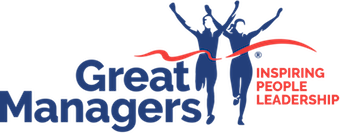Upgrade Your Culture with Tribal Leadership
Culture and Organisational Tribes
Every organisation is like a set of small towns. The people are different in every town, and the roles are different, but there are more similarities than differences. These small towns are really tribes, and they form so naturally it’s as though our tribe is part of our genetic code. Tribes are collectives of people, who in organisations, get work done. Sometimes a LOT of work! Tribes are the basic building block of any large human effort. Some tribes demand excellence for everyone and are constantly evolving. Others are content to do the minimum to get by.

So what makes the difference in performance?
I’m sure you know my answer to that, it’s Great Leaders that will do that. It’s Tribal Leaders. Great leaders focus on building the tribe and the tribe culture. They look like a leader, they sound like a leader and they act like a leader. They’re a role model for the organisational values because they understand human behaviour. They understand the importance of what they think, what they say and what they do. Great Tribal Leaders know that when you change the language and behaviour in your tribe, you change the tribe itself. If tribes are the most powerful vehicles within organisations, culture is their engines.
What is Tribal Leadership? (and how can we use it to improve workplace Culture)
According to Dave Logan, John King and Halee Fischer-Wright, authors of Tribal Leadership, tribal leaders focus their efforts on building the tribe.
A tribal leader is someone who:
- is actively upgrading the culture in their tribe.
- knows that culture is what makes the different and figures out their tribe’s current culture.
- knows how to nudge their tribe from one stage to the next.
Let’s have a look at the 5 stages of a tribe.
Logan, King and Fischer-Wright say that tribes evolve through 5 stages of development. At each cultural stage, there is a specific cultural fingerprint made up of the language that people use and observable behaviour toward others in the tribe. Each stage has its own way of speaking, or theme that appears whenever people talk, email or joke around. You’ll see the themes show up in survey results (if you do them), like staff survey results or climate surveys. Or simply just when they interact with each other.
Stage 1: “(All) Life Sucks!”
If people at stage 1 had t-shirts, they would read, “Life sucks!” What comes out of their mouths supports this. People at stage 1 are despairingly hostile, and they band together to get ahead in what they describe as an unfair world. Luckily only 2% of teams are at this level, and most organisation act quickly to expel these people.
Stage 2: “My Life Sucks!”
In 25% of workplace tribes, the dominant culture is stage 2, which is actually a quantum leap from stage 1. People at this level use language centred on “MY life sucks”, rather than “ALL life sucks”, and behave in a separate and apathetic way.
Stage 3: “I’m Great and You’re Not!”
Is the dominant culture in 49% of workplace tribes and is reflected by, “I’m great” language… With the undertone of, “and you’re not.” The keywords are “I”, “me” and “mine”. It’s about personal domination, competitiveness and what’s in it for me.
Stage 4: “We’re Great!”
Stage 4 represents 22% of tribes, where the theme of people’s communication is, “We’re great.” There is a mood of tribal pride. Now, a “we’re great” culture always has an adversary. The full theme is “We’re great… and you’re not.” Which usually refers to a competitor outside the organisation. Famous examples of this would be Apple versus Microsoft. Now in a larger organisation, the competitor or the adversary might be a group within the same organisation, and you’ve probably seen a bit of competitiveness within an organisation before. Stage 4 is where tribal leadership begins, and relationships take the form of stable partnerships. Stage 4 is the launching pad for stage 5, which reflects less than 2% of workplace cultures.
Stage 5: “Life’s Great!”
Stage 5’s t-shirt would read, “Life’s great.” And they haven’t been using any illicit substances, either. Their language revolves around potential, and their noble cause. Not to beat a competitor, but because doing so will make a big difference, possibly even a global impact. This stage is pure leadership, pure vision, inspiration and high performance.
Based on the research, most organisations have tribes that are a mixture of stages 2, 3, and 4, with most hovering around the dividing line between “My life sucks” and “I’m great.” Here’s what results you’ll see when you’ve got that: A battle ensues between the personal, agenda-driven people at stage 3, and the vision-driven people at stage 4. With those at stage 2 largely sitting back to see who wins. People complain about all the politics around here, and there is a high level of frustration about why change is so hard to implement. Despite all the training provided, trust and communication are always the weak spots on staff surveys. Just think for a moment, does this sound familiar?
So, What Can You do About it?
The way to move the entire tribe’s performance to the next level is to move the critical mass to the next stage. Now this process involves moving many people forward, individually by facilitating them to use a different language and to shift their behaviour accordingly. Your role as a leader is to first locate where your tribe is at. To do this you need to listen to how most people talk and to notice how most people structure their work relationships in your team.
To learn more about each tribal stage in detail, in the full MasterClass I’ll take you through each stage one by one. After I’ve gone through each stage, I’ll take you through some suggestions about how to upgrade from one level to the next.
Access the entire MasterClass library here… Great Managers® MasterClass Series










